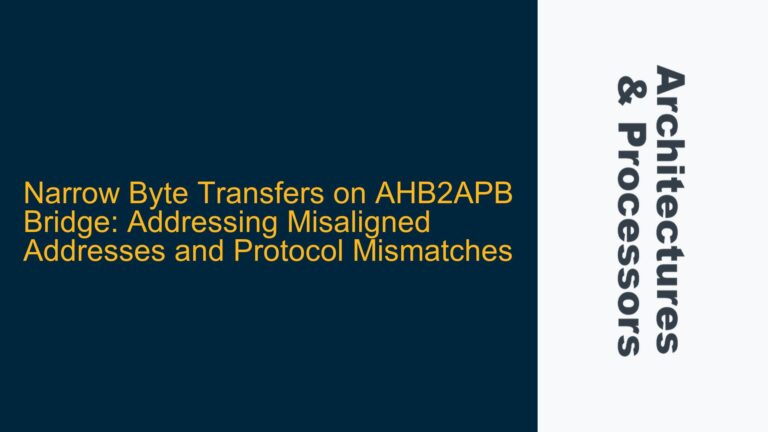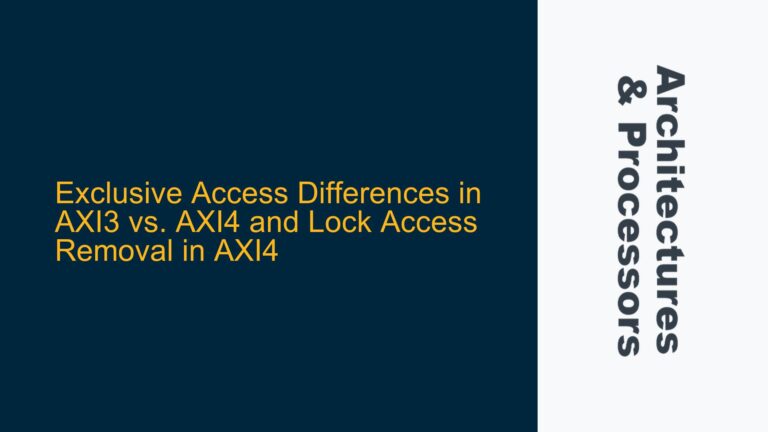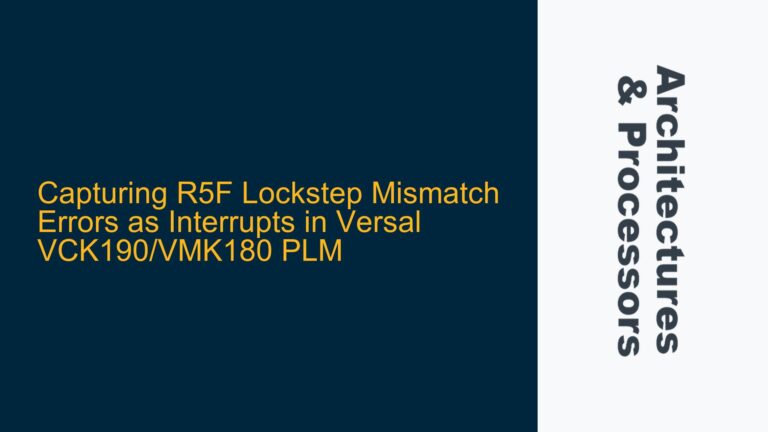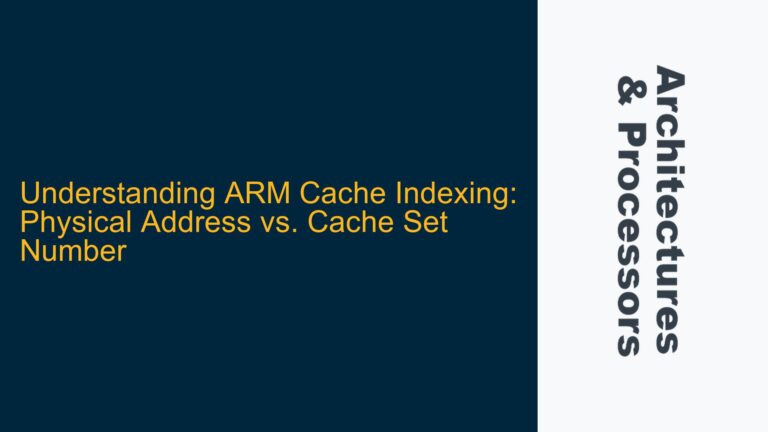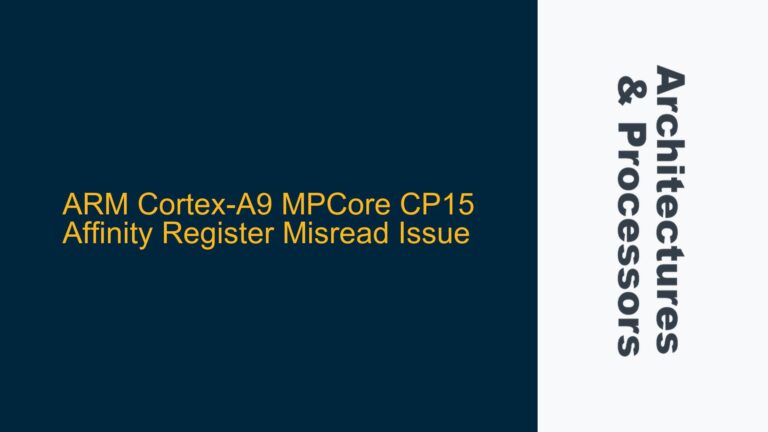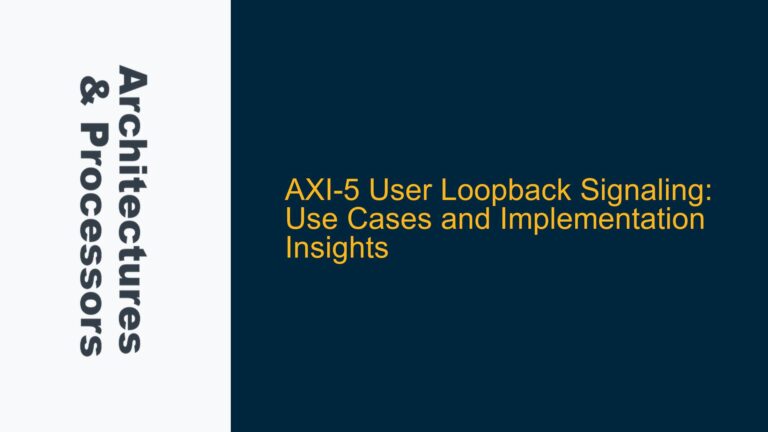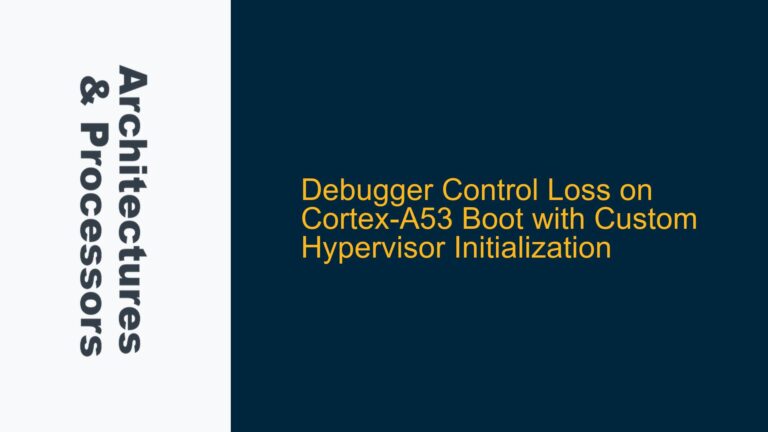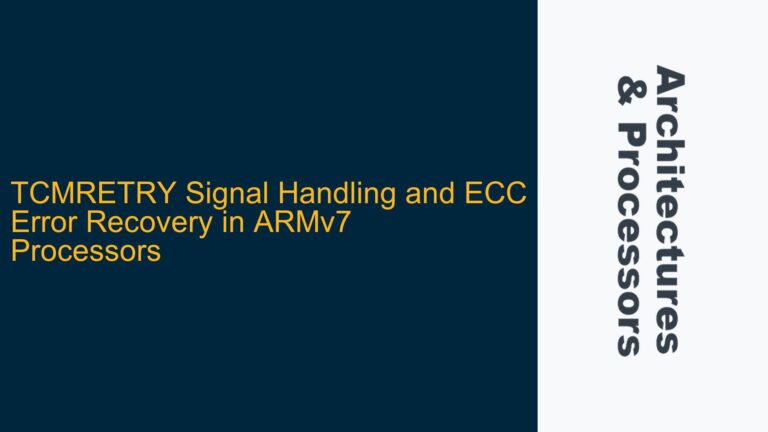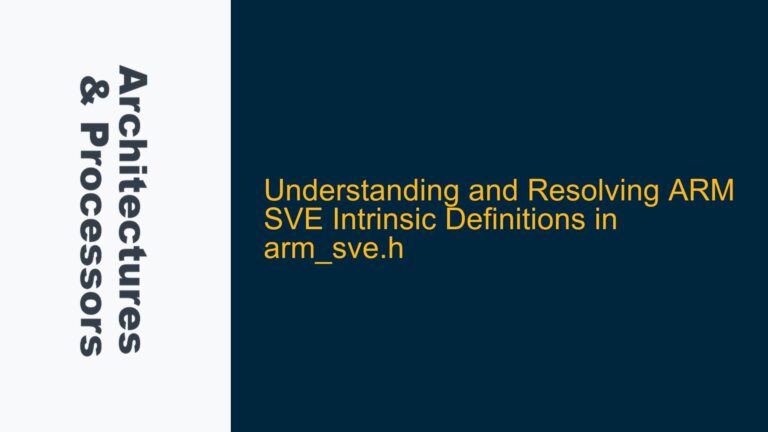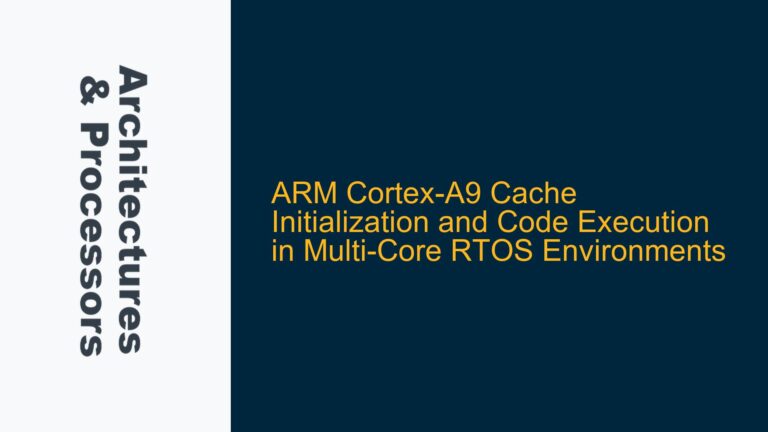Narrow Byte Transfers on AHB2APB Bridge: Addressing Misaligned Addresses and Protocol Mismatches
Misaligned Byte Transfers on Word-Addressable APB Slaves The core issue revolves around the behavior of an AHB2APB bridge when handling narrow byte transfers, specifically when the AHB master initiates a single-byte read transaction targeting a word-addressable APB slave. The AHB master sends a starting address of 0x01 with HSIZE set to 0 (indicating a byte…
